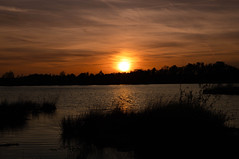The Caucasian shepherd fights extinction
090914-REPORTAGE-001-ENG-GEO
Growing demand for the famous Caucasian shepherd might be more than the limited existing population of this purebred dog can accommodate.
A purebred dog is being “loved to death” by Georgians.
Caucasian shepherds are becoming more and more popular in Georgia and abroad. It has become trendy to bring a Caucasian shepherd down from the mountains to the city.
“Only several dozen [Caucasian shepherds] are left in Georgia,” said Temur Tsagareishvili, the head of a Tbilisi-based dog club, Bombora.
The Caucasian shepherd is squat, up to 70cm high at the shoulder, robust and muscular. It has short hair but has evolved to endure both frost and heat. Some researchers claim the breed originates in Georgia’s mountainous Kazbegi region and consider it a symbol of national identity.
Throughout history, the dog’s primary duty was to keep sheep in line and thwart wolf attacks.
“Caucasian shepherds should herd sheep and not live in cages,” said Tamaz, a Kazbegi shepherd.
However, post-Soviet economic decline forced many Kazbegi farmers to sell their dogs in the 1990s. Well-heeled Russians and Georgians living in town bought many of them. Others suffered exploitation in dogfights.
‘Go Maxi! Go!’
In a dusty haze, two dogs bit at each other’s legs, shoulders and face. Saliva dribbled through bloodstained teeth and flew through the air. A throng of spectators rooted for their favourites.
“Go Maxi! Go!” one of the owners shouted.
Many call this spectacle a dogfight — an activity condemned and illegal in many countries. But here, in the village of Lisi outside Tbilisi, organisers call the battle a “test” intended to pick out a stronger specimen for breeding use. The dogs are Caucasian shepherds, rather than those bred for fighting.
“Here dogs are not traumatised, and the fight stops immediately after a dog whines to surrender,” Tsagareishvili said.
The first round finished in a draw. One dog’s master demanded a continuation so that a winner would emerge. A spectator leading his two small children by the hand also demanded it. The dogfight went on.
“My job is to name the winner, but only the dogs’ masters can decide to halt the battle or not,” said Zviad Phandari, who refereed the fight. At the end of the bout, the losing dog received a sedative from his master to mask the pain of leg wounds.
“In most countries dogfighting is a felony or misdemeanour, but in Georgia nobody can be detained according to our criminal code,” said Teimuraz Tsikoridze, head of the Georgian Society for the Protection and Safety of Animals (GSPSA).
Organisers of these tests have a lorry-sized loophole to exploit in Georgia’s criminal code. The law bans mistreatment of animals that may lead to their mutilation or death but says nothing clear about dogfights. “Test” organisers have not found prosecutors willing to challenge their interpretation of the law.
The events’ spectators also include a number of children, whose presence unambiguously violates the law.
Animal scientists frown on the practise of pitting Caucasian shepherds against each other. They warn that forcing a dog with such bloodlines fight spoils the breed.
Fighting makes the dogs more aggressive toward other dogs and even toward their masters, said Frank Schrier, a German linguist who has studied the Caucasian shepherd for more than a decade and owns one himself.
“Some people think if the [shepherd] can fight a champion, he is stronger, but it is not true. If you concentrate on one trait of the dog and neglect another one, than you change the breed,” he said.
Schrier said fighting “changes the psychology of the dog”. Other factors, though, are taking a toll on the Caucasian shepherd.
‘These dogs have to be free’
Urban living does not suit these proud denizens of the mountains. That common-sense knowledge does not sit well with wealthy Georgians who confine their Caucasian shepherds to houses and tiny yards.
Schrier said it is vital to give Caucasian shepherds unrestricted movement. He lives in Napetvrebi, several kilometres from Tbilisi. Almost every morning he runs a few kilometres with his dog, Basara, which he bought in Kazbegi.
“These dogs have to be free,” Schrier said. “If you take them from the mountains to the city, give them different tasks, it changes their behaviour. They lose their ability to guard the flock the way they could before.”
Tsikoridze remembers how he once sent a Caucasian shepherd from Algeti to the Netherlands, where a Dutch friend wanted the dog to live in town. After two years of intensive training, the Dutchman sent the dog back, saying, “It is a pity to use this dog for purposes that are not inborn with him.” Tsikoridze “repatriated” the dog to guard flocks of sheep again.
The bigger, the better
Nouveau-riche Georgian owners place great stock in dog size. Many living in town clamour for large, furry Caucasian shepherds, which they parade at exhibitions in Tbilisi.
Fighting dogs, usually covered with scars, seldom participate in such shows, since a perfect external appearance is essential for taking home a trophy.
Schrier fears that these exhibitions, with their emphasis on dogs’ looks, do not benefit the breed. “Within a year you may get bigger, more beautiful dogs, but you lose so much at the same time,” he said. “But it is a business, and it is easier to sell puppies if the father is a champion.”
Another problem associated with dog shows is that city-dwelling Caucasian shepherds are closely related. It is almost impossible to track the true genetic relationship between representatives of the same breed. Continued inbreeding is damaging the dogs and makes for unhealthy descendants.
“Demand is greater than the number of dogs available,” Schrier said. “If you need more and more puppies and have only a few males and females, the rate of inbreeding increases.”
Zura Javakhishvili, the professor in the department of life sciences at Ilia State University in Tbilisi, suggested two possible solutions to rescue the imperilled breed. He recommends conducting genetic analyses that would identify genuine members of the breed and then setting new criteria for breeding. He also suggests returning the dogs to nature, where they would crossbreed by themselves and broaden their own gene pool.
![The Caucasian shepherd originated in Georgia's mountainous Kazbegi region is facing the fight of their lives. [Temo Bardzimashvili]](https://catword.wordpress.com/wp-content/uploads/2010/02/caucasian-shepherd.jpg?w=300&h=200)
![Fighting "changes the psychology of the dog", said Frank Schrier, a German linguist who has studied the Caucasian shepherd for more than a decade and owns one himself [Eka Chitanava]](https://catword.wordpress.com/wp-content/uploads/2010/02/dog-fight.jpg?w=300&h=185)
![Scientists say taking Caucasian shepherds from mountains to the city "changes their behaviour" and that the dogs should be free. [Temo Bardzimashvili]](https://catword.wordpress.com/wp-content/uploads/2010/02/dog-exhibition.jpg?w=300&h=200)


